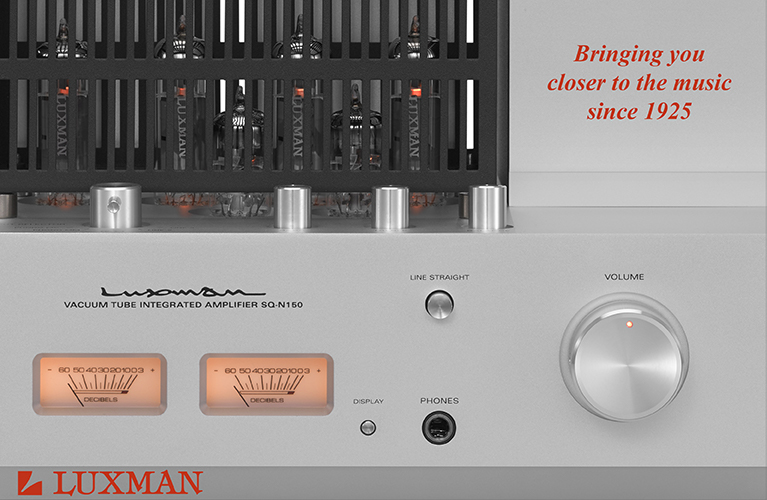Note: measurements taken in the anechoic chamber at Canada's National Research Council can be found through this link.
Simaudio was established more than 40 years ago as an electronics manufacturer. Today, employing more than 60 people in its facility in Boucherville, Quebec, the Canadian company is best known for producing preamplifiers, power amplifiers, integrated amplifiers, and phono preamplifiers sold worldwide under the Moon brand name. Earlier this month, the company surprised everyone by announcing that it would enter the loudspeaker market—a bold move, because that’s a tough nut to crack, even for an established brand, since there are already so many speaker manufacturers the world over. But there’s a legit reason for the move—the people at Simaudio felt that the company simply had to enter the segment with a speaker to mate with a product they call ACE, which was introduced about five years ago and currently sells for $4200 (all prices in USD).
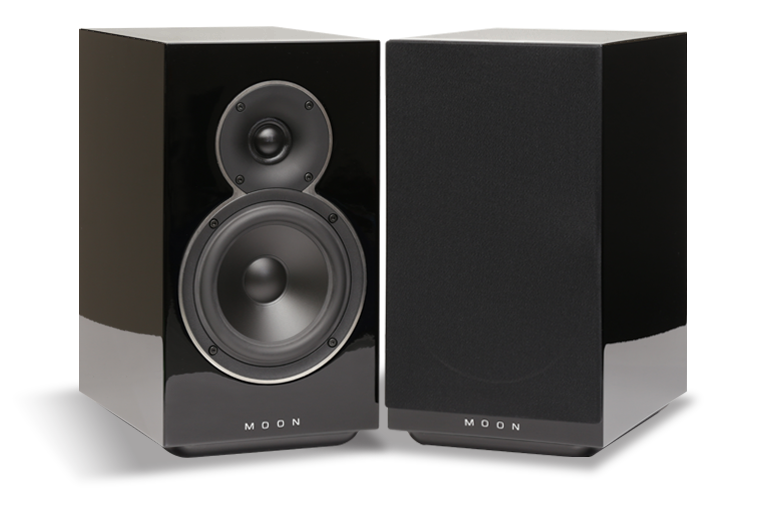
ACE is an acronym for a complete experience, meant to reflect the product’s rich feature set—it’s a 50Wpc (into 8 ohms) integrated amplifier with a DAC, Moon’s MiND 2 streaming platform, a moving-magnet phono stage, a headphone amp, and an abundance of digital and analog inputs and outputs. The ACE is pretty complete as far as hi-fi electronics go—and as an electronics company, the folks at Simaudio thought that it was as complete a product as they needed to make. But they learned that customers didn’t see the ACE as a complete system, because they still needed to buy speakers—from other companies, to boot. So to make something more complete, Simaudio has introduced the Moon Voice 22 bookshelf loudspeaker, priced at $3000 per pair. We can assume a pair of Voice 22s works really well with the ACE, but are the speakers suitable for a non-ACE system, with a different amplifier driving them? Since I don’t have an ACE, that’s what this review explores.
Description
Insofar as bookshelf speakers go, certain design aspects of the Voice 22 are typical. For example, the MDF cabinet measures about 14″H × 8″W × 11.5″D and has walls about 1″ thick. On the front are a 1.1″ soft-dome tweeter and a 6″ midrange-woofer with a mineral-filled polypropylene cone and a cast-aluminum basket. The drivers are purpose-built for the Voice 22, but their dimensions and the cabinet itself don’t depart much from a bazillion other two-way bookshelf-type speakers on the market right now. There’s a magnetically attachable grille supplied for driver protection, but the speaker sounds better with it off—as is usually the case. And as with almost all two-way bookshelf designs today, the Voice 22 is ported, so around back, near the top, you’ll find the flared bass port. Below the port are high-quality binding posts, which again is fairly typical.
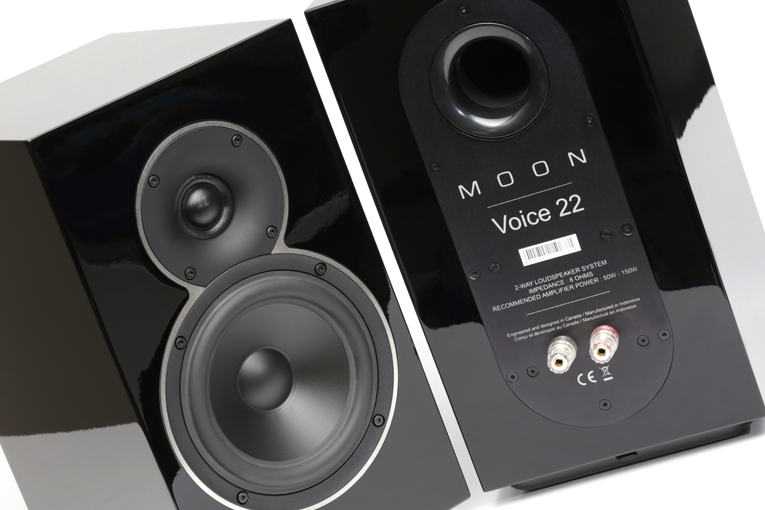
The color choices of black or white (both are glossy) are common as well—though I need to note that the quality of the black finish of my review samples was excellent, with no flaws, orange-peel texture, or other issues. I also saw a white pair when I visited the factory recently and their finish quality looked top-drawer as well. But even so, they’re garden-variety colors. Furthermore, the speaker’s rated sensitivity of 89dB (2.83V/m) and nominal impedance of 6 ohms don’t raise any eyebrows, and the low-frequency extension of 55Hz (-6dB) doesn’t elicit oohs and aahs, either.
If there were no more to the Voice 22 than that, it might’ve been doomed to be just another two-way bookshelf speaker—of which, arguably, the world already has too many. But the 22 has some distinctive features to make it stand out. For instance, the waveguide surrounding the tweeter is cut out on the bottom so that the tweeter’s dome is as close as it can be to the midrange-woofer’s cone. The waveguide also sets the tweeter’s dome back from the front baffle, which allows the “acoustic centers” of the drivers to be aligned. These things are said to improve the driver-to-driver coherence when launching sound waves.
Yet the real benefits of the tweeter’s waveguide are the acoustic gain it provides—so a little less amplifier power is needed to reach a certain sound-pressure level—and the directivity control it offers to allow for a more seamless blend with the midrange-woofer at the crossover point. The low crossover frequency of 1500Hz is another highlight, which also factors into the directivity control. Crossovers in two-ways like this one are usually implemented between 1800 and 2500Hz—and sometimes higher.
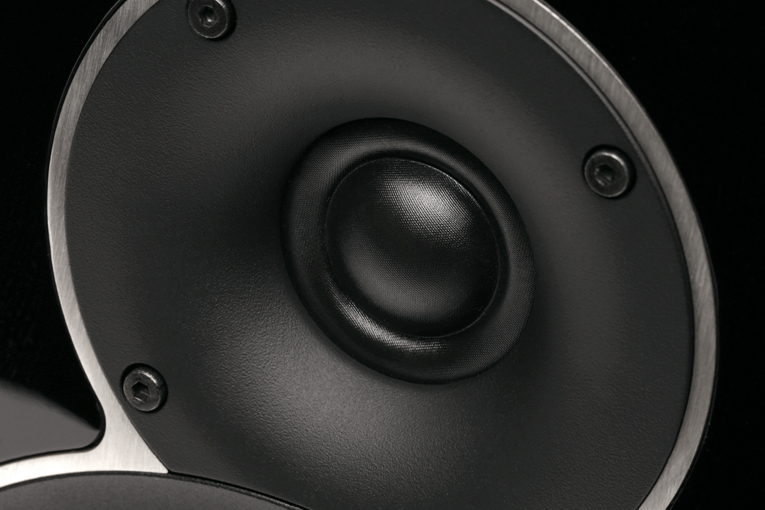
When talking about the Voice 22 with Dominique Poupart, Simaudio’s product manager and team leader for this project, I was told that the lower-than-normal crossover point combined with the waveguide shape were chosen so the dispersion characteristics of the tweeter would match ideally with the midrange-woofer’s dispersion at and around the crossover frequency. If the crossover frequency were any higher, the blending of the drivers would’ve been compromised. With the Voice 22, the result is wide and even dispersion, so whether you’re listening to one speaker or a pair, the sweet spot—meaning the listening area in which the best sound is experienced—should be fairly broad. But Poupart told me that the lower crossover frequency also improved midrange clarity compared to higher crossover points that the team tried, so that was another reason they settled on 1500Hz.
But when it comes to loudspeaker design, pretty much every positive has a negative. So the low crossover frequency improves the dispersion characteristics of the driver combo, but making the tweeter reproduce more of the lower frequencies stresses it—which can lead to increased distortion. Poupart told me that the team took that into consideration, but they felt that the design of the tweeter in the Voice 22 is robust enough to handle such a low crossover frequency. That said, the impact of the 1500Hz crossover frequency is something I investigated, which I discuss later in the listening section. Furthermore, our measurements of the speaker, which are linked at the top of the review, help to tell that story as well, since we measure distortion—so make sure to check them out. (It’s our policy to keep measurements secret until the reviewer’s listening impressions are complete, so I hadn’t seen them by the time I started writing up this review.)
Another Voice 22 feature is what Simaudio calls Curved Groove Damping (CGD), which is applied to the inside of the left and right cabinet walls. This innovation is something Poupart was very proud of when I talked to him. One reason for his pride is because CGD is purported to improve the speaker’s performance by reducing cabinet-wall resonances to a greater degree than what is achievable through bracing alone—though the Voice 22 is also braced. The other reason is that CGD is unique enough to patent, and Simaudio has applied for one.
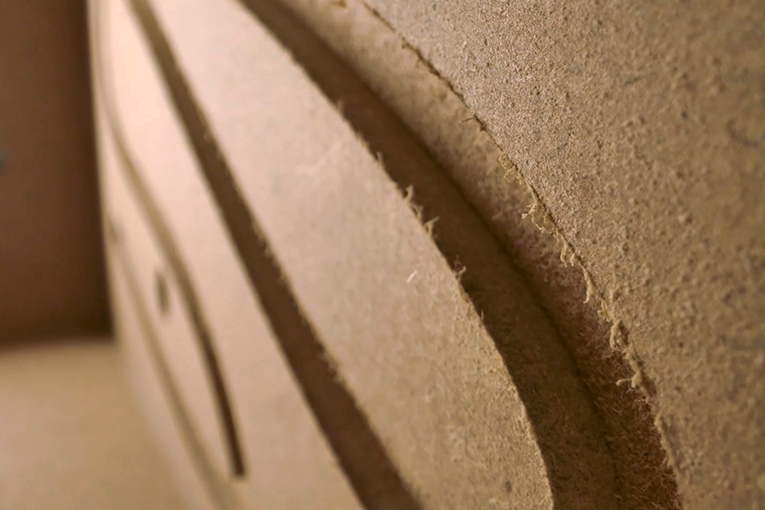
CGD involves routing a continuously curving groove, almost half-an-inch wide, that snakes down the cabinet wall. The groove is then filled with a rubbery compound, which helps reduce resonances. But that’s not all there is to it—the constantly varying distances from the edges of the groove to the edges of the cabinet wall diminish resonances as well.
Two other details are cosmetic, but are still nice to have. One is the narrow, silver-colored metal piece that surrounds both drivers to highlight the keyhole pattern created by their close proximity. The other is the Hover Base, which is something I’m surprised I’ve never seen before, because it’s a clever idea. It’s a subbase that’s almost an inch high, but is a little less wide and deep than the loudspeaker itself. It snaps into an area routed out for it on the bottom of the cabinet. When it’s on, the Hover Bass lifts the speaker up and off the surface it’s sitting on. Because the Hover Base is black, slightly smaller than the base of the cabinet, and has sides that are generously rounded toward the bottom, it can make the speaker look as if it’s floating. Furthermore, the Hover Base has Poron (microcellular urethane foam) embedded into its underside. The Poron protects the surface that the speaker is sitting on and makes the speaker less likely to move around. The Poron might also provide some resonance control, but Poupart didn’t stress that benefit to me when I talked to him, so I really don’t know.
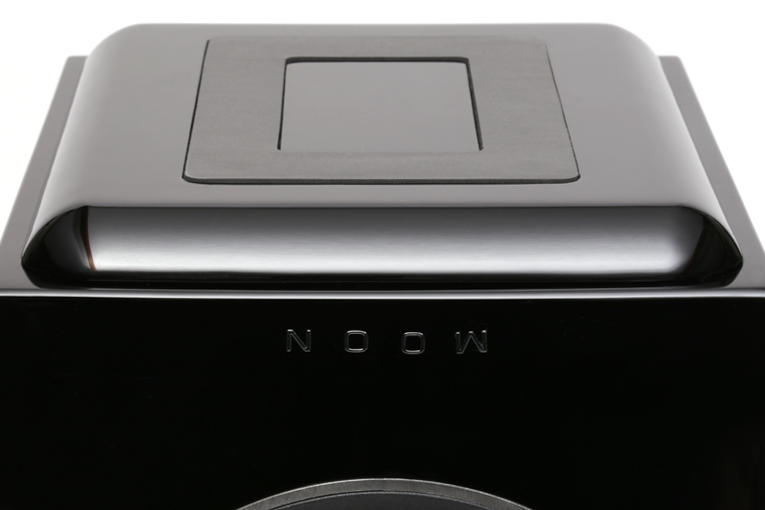
If you want to place the Voice 22 on a stand, like I did with my review pair, you can do so with or without the Hover Base. I left the Hover Base on each speaker when I put them on the 24″ Monoprice Monolith stands and 24″ BBC (a now-defunct Canadian company, not the British broadcaster) stands in the two systems I used for my listening impressions. But for $400, you can also buy a pair of 24″ stands that are custom-made for Simaudio’s Voice 22 by well-respected stand-maker Target. The top plate of the stand is the exact shape of the Hover Base, so it fits into the area under the cabinet that’s been routed out for the Hover Base, which gives the speaker and stand a more seamless look when attached—which is another good design idea.
There’s also one other noteworthy detail—the Voice 22 carries a ten-year warranty with registration, like the company’s electronics. For speakers and electronics, that’s at least twice what most companies offer.
Sound
I first used the Monoprice stands to set the Voice 22s up in my living room, which measures about 19′ long by 15′ wide, with a ceiling that’s 8′ high. This room is where I review the components for my “System One” column. The speakers were about 8′ apart from each other and 12′ from the sofa where I did most of my listening. The rears of the cabinets were about 2′ from the wall behind them. Powering the 22s through QED XT25 speaker cables was a Kinki Studio EX-M1+ integrated amplifier. The vinyl source was my Pro-Ject Audio Systems X1 turntable driving an iFi Audio Zen Phono preamp. Digital playback was through a Denafrips Ares II DAC with a Chromecast Audio streamer attached to one of its TosLink inputs. Analog line-level cables from the phono preamp and DAC to the EX-M1+ were from a new XLO subsidiary called XLO DNA.
As soon as I started playing music, I could tell that the Voice 22 wasn’t as sensitive as the company’s 89dB claim, at least anechoically (Simaudio’s spec doesn’t indicate anechoic or in-room conditions), because I had to turn the volume up a bit higher compared to other speakers I know—and have measured—to have a roughly 89dB sensitivity. Instead, the anechoic sensitivity seemed to be similar to most two-ways I review—about 86dB—but this is where measurements can tell the most accurate story. Still, it didn’t take gobs of power to get the Voice 22s to play loudly enough in this moderately sized room.
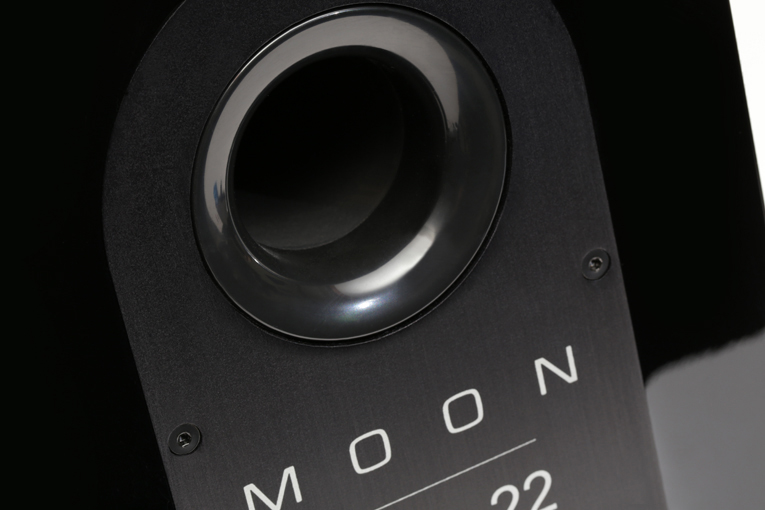
At times, I did play the Voice 22s quite loud, just to make sure they could satisfyingly fill such a space—and they could. But even at much lower volume levels, I heard a robustness in the bass presentation of the 22s that gave music some heft. Judging by ear, I felt they were easily reaching down to 50Hz, or a little lower—handy, because many standmounted speakers sound too light in the bass in my room.
There was also a smoothness in the midrange that was beguiling to listen to for long periods, as well as presence in that same region that made richly recorded vocals, such as Bruce Cockburn’s singing on his The Charity of Night (16-bit/44.1kHz FLAC, True North Records / Tidal), really “pop” from the speakers. This “poppiness” in the midband also manifested itself on other vocal-dominated tracks, male and female, indicating to me that there might be more energy in the speakers than what would be considered strictly neutral. But that wasn’t something I could complain about—vocals sounded good, like really good, as well as natural. The high frequencies sounded consistently silky, but unlike the midrange, which seemed a little boosted, the topmost frequencies didn’t sound elevated or recessed—in other words, neutral sounding.
I also challenged the Voice 22s in this setup to see if the midrange would distort because of the low-ish crossover point, so I pushed some vocal recordings to higher listening levels where it’s easy to hear if there’s any distortion. I’ll cut to the chase and tell you that the midrange didn’t sound distorted—ever. Instead, the midrange sounded startlingly clear with all the music I played through the Moon speakers. But I was still interested to see what the measurements would reveal.
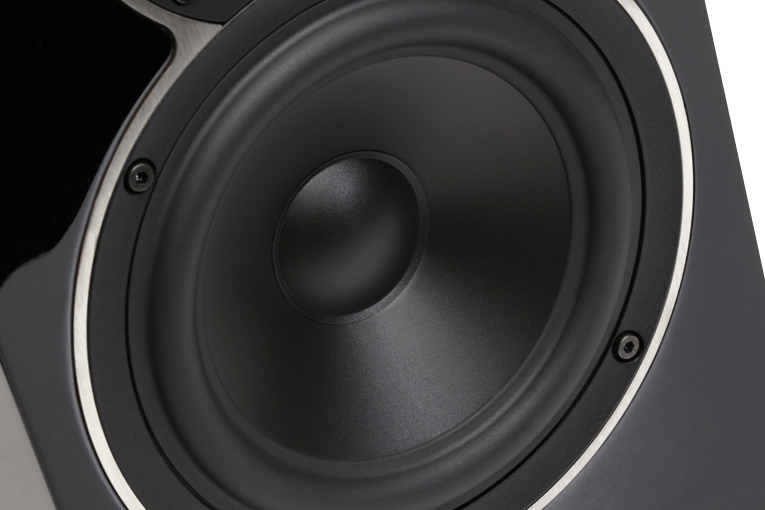
Like I said before, the 22s seemed to extend below 50Hz in the bass, which provided a fleshed-out sound that was a little more satisfying than I’ve experienced with many bookshelf two-ways in my living room. But it would be negligent of me if I didn’t mention that the bass they provided couldn’t match what the new PSB Synchrony B600s delivered in the same room—they can deliver bass to well below 40Hz, which is quite a bit deeper. However, the B600, which sells for $2500 per pair, is a bit of an anomaly in that regard, because its bass depth surpasses almost all two-ways of similar size. As a result, I can’t hold that against the 22s in this setup—they have above-average bass depth for bookshelf speakers of this size. Furthermore, I liked the 22s’ extra presence in the midrange compared to the by-the-book neutrality of the B600s—I loved hearing those vocals pop. But the high-frequency presentations of the two speakers were comparable—basically, a draw.
After a few weeks in the living room, I moved the 22s up to my main listening room, which is bigger—the ceiling is 8′ high again, but the main listening space is about 16′ wide by 18′ long. On top of that, the listening space behind my main listening chair opens into another 16′ by 18′ space that I use for storage. The speakers were atop the BBC stands, placed about 9′ apart from each other and 9′ from the listening chair, thus forming an equilateral triangle. The backs of the speakers were about 7′ from the wall behind them and 5′ to the walls beside them. This kind of setup puts small speakers at a severe disadvantage because they can’t benefit from room gain due to the significant speaker-to-wall distances, but it does allow me to hear more of the speakers and less of the room.
Powering the 22s through QED Supremus speaker cables was the Purifi Audio Eigentakt engineering-sample power amp I wrote about in September 2020. Driving the amp was an Anthem STR preamp-DAC (ARC room correction turned off), fed by streamed and SSD-stored digital music files from an Asus Zenbook UX303U laptop via a USB connection. Other cables and accessories were from Crystal Cable and Shunyata Research, as outlined in the equipment listing at the end of this review.
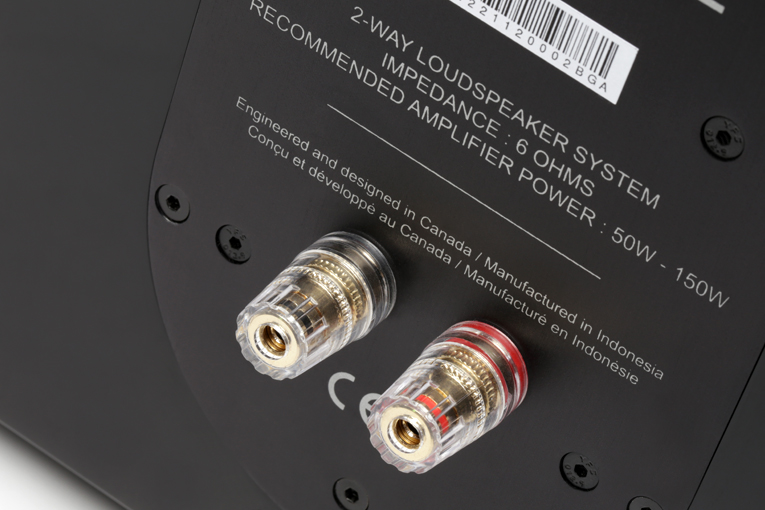
When the 22s made it to this main room, I was finishing Ken Callait’s book Making Rumours, which gave me a renewed appreciation for Fleetwood Mac’s 1977 masterpiece on Warner Bros. Records. Not coincidentally, the first thing I did once the speakers were set up was stream that album from Tidal, which the service delivered in 24/96 MQA format. I bypassed the opening track, “Second Hand News,” to listen to “Dreams,” because I wanted to hear how the 22s would handle the deep bass sounds of Mick Fleetwood’s drums and John McVie’s bass guitar. For smallish speakers, they reproduced the low end extremely well, giving me the sense that I was hearing solid output down to about 40Hz, even though the speakers were way out from the walls. But not only was the bass deep for speakers this small, the control in the lows was also outstanding—the drum sounds had thrust, while the bass guitar was well defined in the mix. I also liked the way Stevie Nicks’s angelic lead vocal was delivered—soft, pure, and clear. Her voice isn’t too forward on this song—I always thought that they could’ve given it more volume in the mix—but the 22s let me hear it very clearly.
As I let the rest of the tracks play out, they uncovered quite a bit more about the 22s’ sound, both good and bad. First the bad—the bottom octave of the audio band was missing (i.e., 20 to 40Hz). And the album’s “biggest”-sounding songs, “Don’t Stop” and “Go Your Own Way,” didn’t sound as big and effortless as they do when reproduced through larger three-way (or more-way) floorstanders, which simply have more driver area and can move more air. Both criticisms are par for the course for two-way bookshelf speakers.
The good from the 22s was plentiful. Whenever I focused on Fleetwood’s drums and John McVie’s bass guitar, the quality of the 22s’ bass presentation was obvious through the punchiness of the drums and the detailed, layered sound of the bass guitar. As it was when the speakers were in my living room, I found the 22s’ highs neither too prominent, nor too dull, making Fleetwood’s cymbal strikes, which are frequent throughout this album, hit my ears at just the right volume level compared to the frequencies below. But what I constantly found myself drawn to was the midrange, mostly because of how easily it let me hear the vocals of Nicks, Christine McVie, and Lindsey Buckingham. Ditto for Buckingham’s complex guitar sounds—they were super-easy to hear.
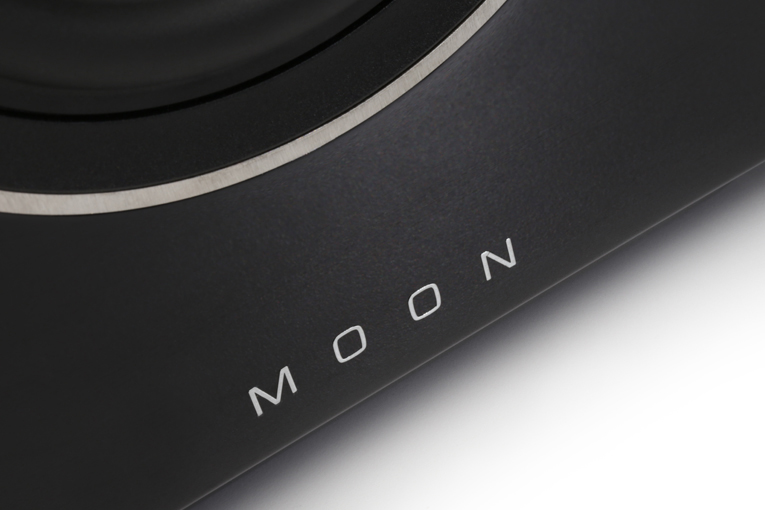
I also played Bruce Cockburn’s “Pacing the Cage,” from The Charity of Night, and came away impressed by the robust reproduction of Cockburn’s singing voice—full and natural-sounding without becoming chesty or bloated, as I’ve experienced with some speakers, big and small. I also liked the controlled sound of Rob Wasserman’s bass, which was as easy to pick out of the mix as McVie’s was on Rumours.
Now for something I haven’t talked about yet: transparency, which fellow-reviewer Diego Estan often brings up in his speaker reviews, because it’s important. In his SoundStage! Access review of the Monitor Audio Bronze 100 loudspeakers, Diego defined it as “the sense that voices and instruments were being reproduced realistically, free of the speaker cabinets.” Based on Diego’s definition, the Voice 22s earned high marks—Cockburn’s vocal, Wasserman’s bass, and the other instruments making up “Pacing the Cage” flew freely from the cabinet.
The high level of transparency also allowed me to hear the soundstage space on this recording, as well as the strong image specificity inherent within—Cockburn’s voice was planted firmly front and center on the stage, with his guitar and the other instruments precisely placed around him. When I played “Birds” and other tracks from Dominique Fils-Aimé’s superbly recorded Nameless (16/44.1 WAV, Ensoul Records), it was the same thing—ideal placement of the vocal, backing vocals, and accompanying instruments. The 22s had no trouble projecting sound into my listening room and drew no undue attention to themselves in the process. That’s what good-sounding speakers are supposed to do.
Conclusion
It’s worth repeating that the loudspeaker market is a tough one to get into these days, even for an established manufacturer like Simaudio. But I think the Moon Voice 22 has a good chance of succeeding because the company has a couple of aces up its sleeve that should help it along.
One ace is the ACE. Although I didn’t use the 22s with that amp, the design goal was to offer a pair of speakers to complement it—and having a ready-made market of current and future ACE owners should guarantee some success for the Voice 22.
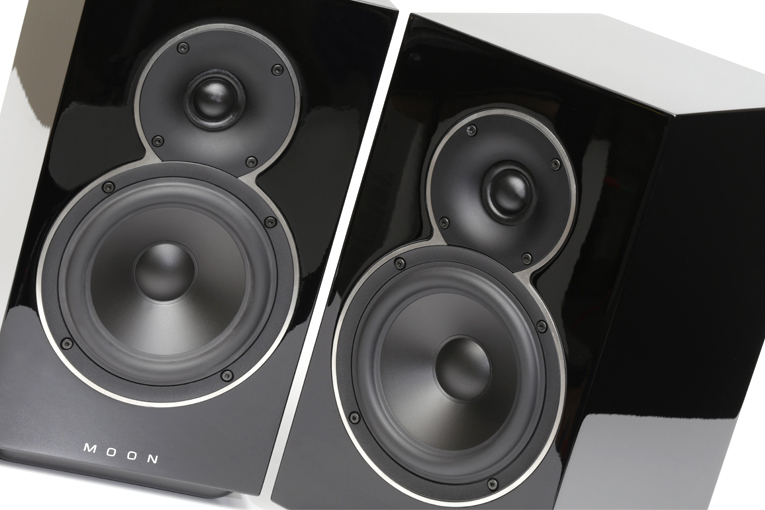
The other ace is the product itself. Had Sim’s team created yet another two-way, pretty much identical to a plethora of other two-ways out there, it would be lost in the crowd. But the company added the clever design ideas I have described to help distinguish it. Not surprisingly, the Voice 22 has something different to offer in terms of sound, probably because of those unique technical design ideas. The way its midrange pops to the forefront so readily, and so clearly, is the most obvious thing. But it’s not just that. The Voice 22s performed superbly in my two quite different rooms, providing commendably deep, tight, and punchy bass; silky and clean highs; high transparency; and, yes, a character to its midrange that can’t be missed. As a result, the 22s were not only easy to listen to, they were interesting to listen to because they presented a sound that was different enough compared to all the other two-way bookshelf designs that have been in and out of my listening spaces—and I enjoyed that. To sum it up, Moon’s Voice 22 is, literally, a speaker with a voice of its own. If what I have described appeals to you, listen to a pair of Voice 22s—whether you’re an ACE owner or not.
. . . Doug Schneider
das@soundstagenetwork.com
Associated Equipment
- Speakers: Revel Ultima2 Salon2, Vivid Audio Kaya S12, PSB Synchrony B600.
- Amplifier: Purifi Audio Eigentakt.
- Preamplifier: Anthem STR.
- Integrated amplifier: Kinki Studio EX-M1+.
- Digital-to-analog converter: Denafrips Ares II.
- Computer: Asus Zenbook UX303U laptop running Windows 10, Roon, Tidal, Qobuz.
- Digital link: Shunyata Research Alpha (USB).
- Analog interconnects: Crystal Cable Standard Diamond, XLO DNA.
- Speaker cables: QED Supremus, QED XT25.
- Power distributors: Shunyata Research Sigma S12 and Venom PS8 with Defender.
- Power cords: Shunyata Research Venom HC, Alpha NR, E-Tron Alpha HC.
- Speaker stands: Monoprice Monolith, BBC SS-24.
Simaudio Moon Voice 22 Loudspeakers
Price: $3000 per pair.
Warranty: Ten years, parts and labor (with registration).
Simaudio Ltd.
1345 Newton Road
Boucherville, Quebec J4B 5H2
Canada
Phone: (450) 449-2212
Email: sales@simaudio.com
Website: www.simaudio.com






















